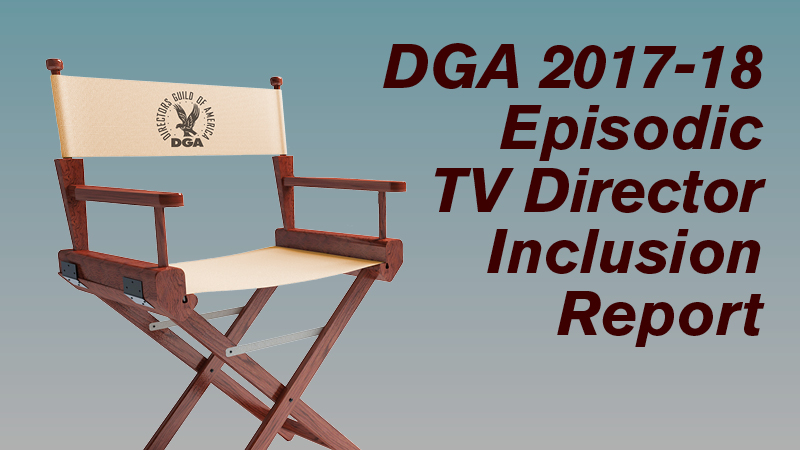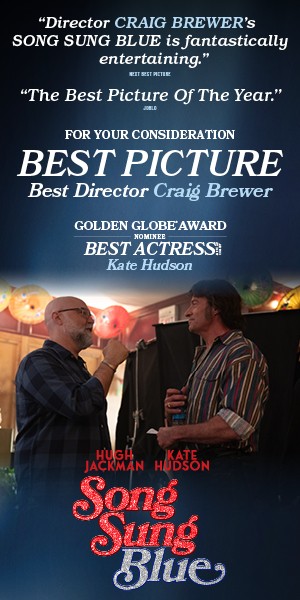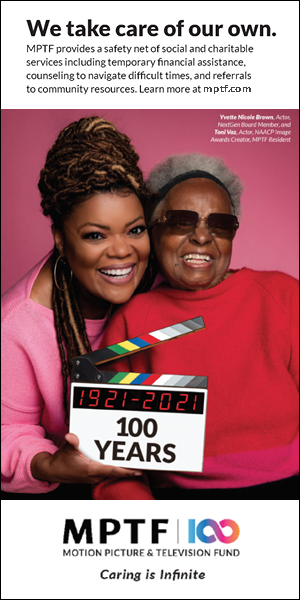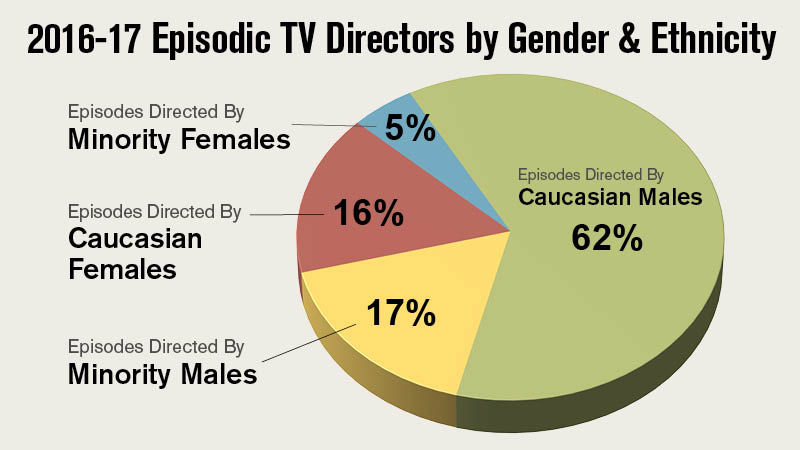LOS ANGELES – A record high percentage of episodic television directing jobs went to women and directors of color this past TV season, the Directors Guild of America reported today. The percentage of episodes directed by women rose to 25% of all episodes, and the percentage of episodes helmed by directors of color increased to 24% of all episodes.[1]
Breaking down the data:
- Women directed 25% of all episodes[2], up from 21% last year;
- African-Americans (male and female) directed 13%, the same as the year prior;
- Asian-Americans directed 6%, up from 5%;
- Latinos directed 5%, up from 4%;
- Caucasians directed 76% of all episodes, down from 77% the prior season;
- Men directed 75%, down from 79%.
Said DGA President Thomas Schlamme:
“It’s encouraging to see that the compass is pointing in the right direction, yet progress is mixed. The bright spot here is that the doors are finally opening wider for women, who are seeing more opportunities to direct television. But it’s disappointing the same can’t be said for directors of color. The studios and networks who do the hiring still have a long way to go, and we are committed to continuing this important fight.”
The DGA’s annual episodic TV director inclusion report, released today, analyzed nearly 4,300 episodes produced in the 2017-2018 television season, down from the all-time high of nearly 4,500 episodes in the prior season.
The effects of the decline were not uniform, with year-over-year changes varying by ethnicity and gender. Asian American directors helmed 9 more episodes than in the 2016-17 season, and Latinos directed 12 more episodes – while African Americans helmed 14 fewer episodes, and Caucasians directed 235 fewer episodes. Women directed 131 more episodes than in the 2016-17 season, while men directed 339 fewer episodes.
For the DGA’s recent study on the hiring of first-time episodic television directors, which raised concerns about the impact of employer hiring practices on long-term inclusion, CLICK HERE.
Report Highlights
- The number of episodes helmed by directors of color was stagnant, while the number of episodes directed by women saw double-digit growth and the number of episodes by Caucasian males declined.
- Women directed 1,085 episodes – a 14% increase over last year.
- Caucasian women helmed 813 episodes, up from 714 last year; and minority women directed 261 episodes, up from 236.
- Directors of color helmed 1,017 episodes, just 11 more than in the 2016-2017 season – a 1% increase.
- Minority males directed 756 episodes, 14 fewer episodes than last season.
- Caucasian males directed 2,414 episodes, 335 fewer episodes than last season.
- Insider hiring dynamics had a disruptive effect. While some insider hiring leads to true “hyphenates” and career directors, most does not. The ongoing employer practice of giving out jobs to series insiders with little long-term interest in directing has created a challenge both to increasing future diversity and the incumbent workforce. Nowhere is that more clear than the ever-growing[3] pipeline of new episodic television directors entering the pool. A recent multi-year DGA study found that in the seven TV seasons between 2009/10 and 2015/16 – nearly 70% of the more than 720 first break directing assignments were given to insiders, 75% of which went to male Caucasians. Insiders went on to develop directing careers just 24% of the time, compared with 71% of career track directors, who were also more diverse as a group. Not only does the practice act as a bottleneck to the pipeline of new directors, crowding out talented diverse directors – it also diminishes the available number of jobs for the increasingly diverse workforce of career track directors.
Analysis & Ranking of Television Studios[4]
Combined, the twelve dominant industry employers oversaw the production of 77% of the episodes covered in this report. By aggregating the episodes from each employer, differences in the companies’ hiring patterns emerge.
Taking a look at the rankings in the table above, Disney/ABC, Twentieth Century Fox, Lionsgate and CBS held the top four spots in the hiring of diverse directors.
In the middle were Paramount, HBO, NBC Universal, and Warner Bros. Sony, Netflix, Amazon and Viacom held the ninth through twelfth spots.

To view the full data PDFs on the series analyzed by the DGA see the "Additional Data" links below.
The DGA has been pressing studios, networks, and producers to be more inclusive in hiring for nearly four decades. The Guild’s efforts include: collective bargaining gains requiring television studios to operate TV director diversity programs, and all first-time TV directors to attend a DGA orientation; ongoing meetings with studios, networks and individual series regarding their hiring records; and publicized reports detailing employer hiring patterns. In addition, the Guild itself has initiated a variety of TV director mentorship and educational programs to support the career development of its members.
For more information about the DGA’s diversity efforts, visit: www.dga.org/The-Guild/Diversity.
Appendix A – 2017-2018 In Comparison with Previous Year
Comparing figures for 2017-2018 with 2016-2017, this year’s report shows that:
- The percentage of episodes directed by Caucasian males decreased from 61% to 56%;
- The percentage of episodes directed by minority males increased from 17% to 18%;
- The percentage of episodes directed by Caucasian females increased from 16% to 19%; and
- The percentage of episodes directed by minority females increased from 5% to 6%.
Additional Data
The series and episodes analyzed were made under a DGA agreement by studios and production companies. The report analyzed the ethnicity and gender of directors hired to direct episodic television series across Broadcast, Basic Cable, Premium Cable, and high-budget original series made for Subscription Video on Demand (SVOD). Pilots are not included in the statistics. The DGA compiled the statistics in this report using internal information and information provided by production companies pursuant to the reporting requirements of its various collective bargaining agreements. All figures in this report are rounded to the nearest percentage.
Click the links below to view PDF spreadsheets of the full data organized by specific criteria.
Note: Included in the data are foreign series shot abroad with one or more episodes made under a DGA agreement. Only the episodes that were made under a DGA agreement were included in the overall statistics.
- Report by % of Episodes Directed by Women & Minorities (PDF)
- Report by % of Episodes Directed by Women (PDF)
- Report by % of Episodes Directed by Minorities (PDF)
- Report by Show Title (PDF)
- Report by Signatory Company (PDF)
- Report by Studio (PDF)
- Report by Network (PDF)
For any questions regarding the data included in these spreadsheets, please contact Lily Bedrossian at 310-289-5333 or email lbedrossian@dga.org.
Footnotes
[1] These numbers represent increases of 4 percentage points for women, who directed 21% of episodes in the 2016-17 season – and 2 percentage points for directors of color, who helmed 22% of episodes. See Appendix A for full comparison with the 2016-2017 season.
[2] While the percentage of overall episodes directed by Caucasian women increased by three points from 16% to 19%, the percentage directed by women of color inched up just one point from 5% to 6%.
[3] In the 2017-18 season, employers increasingly gave directing jobs to first-time TV directors – giving a near record 5% of all directing jobs to first-timers for the second year in a row (a significant jump from 3% in past seasons). The majority of first time hires have been insiders, and male Caucasians. The DGA is doing further research on the magnitude and impact of ongoing insider hiring made after a first break.
[4] This report tracks employment by television studios (production), as opposed to networks (distribution). Hiring decisions are primarily made by studios – even when they share the same parent company as a network which may have some approval of those decisions. Moreover, many studios also produce series for outside networks, and some studios are not affiliated with a network.
About the Directors Guild of America
In the more than 80 years since its founding in 1936, the DGA has fought for the economic and creative rights of its members; protected their ability to financially benefit from the reuse of their work; established strong pension and health plans; and established jurisdiction in new technologies and distribution platforms. Today we represent more than 17,500 directors and members of the directorial team working in film, television, commercials, new media and other audiovisual media.












